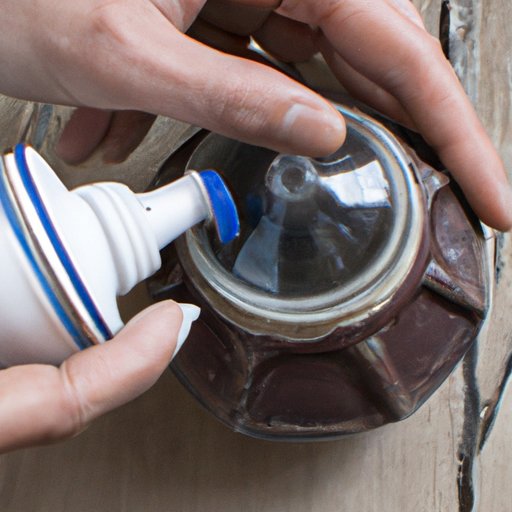Introduction
Antique painting is a type of decorative art in which furniture is painted with a unique style and technique. The goal is to make an old piece of furniture look new again, while also adding a touch of vintage charm. This article will provide a step-by-step guide on how to antique paint furniture, from selecting the right paint to protecting the finished piece.
Identify the Right Paint
Choosing the right paint is crucial for successful antique painting. You want a paint that is durable enough to withstand the wear and tear of everyday use, but still has the desired antique look. There are many types of paints available, including latex, oil-based, and chalk-finish paints. Each type of paint has its own advantages and disadvantages, so it’s important to do your research and choose the one that best suits your needs.
When selecting a color, it’s important to consider how the finished piece will look in the space. If you’re looking for a more classic look, choose neutral colors such as white, beige, or gray. If you want to add a pop of color, opt for bolder shades such as red, blue, or green.
Prepare the Furniture
Once you’ve chosen the right paint, it’s time to prep the furniture for painting. Start by sanding down any rough spots or bumps on the surface. Then, use a damp cloth to thoroughly clean the piece. After that, apply a layer of primer to ensure the paint adheres to the surface. Finally, wax the piece to protect the wood and give the paint an extra layer of protection.
Use the Right Technique
When it comes to antique painting, the technique you use is just as important as the paint itself. Start by applying the paint in thin layers, using a brush or sprayer. Make sure to let each layer dry completely before moving onto the next. Once the paint is dry, you can start distressing the piece to give it a more authentic antique look. This can be done by lightly sanding areas of the furniture to expose the wood underneath.
Add Finishing Touches
Once you’ve achieved the desired antique look, it’s time to add some finishing touches. A glaze can be applied to give the piece an aged look. You can also use antiquing wax to add dimension and texture. Finally, seal the piece with a coat of clear sealant to protect the paint from scratches and fading.
Protect the Piece
To keep your antique-painted furniture looking its best, you’ll need to take some steps to protect it. Avoid placing the piece in direct sunlight, as this can cause the paint to fade over time. Also, try to avoid contact with water and harsh chemicals, as these can damage the paint. Finally, use coasters and placemats when serving food or drinks on the piece to protect it from stains.
Conclusion
Antique painting is a great way to breathe new life into an old piece of furniture. By following the tips outlined in this article, you’ll be able to create a beautiful, vintage-style piece that will last for years to come. If you have any questions or would like more information on antique painting, please don’t hesitate to reach out.


